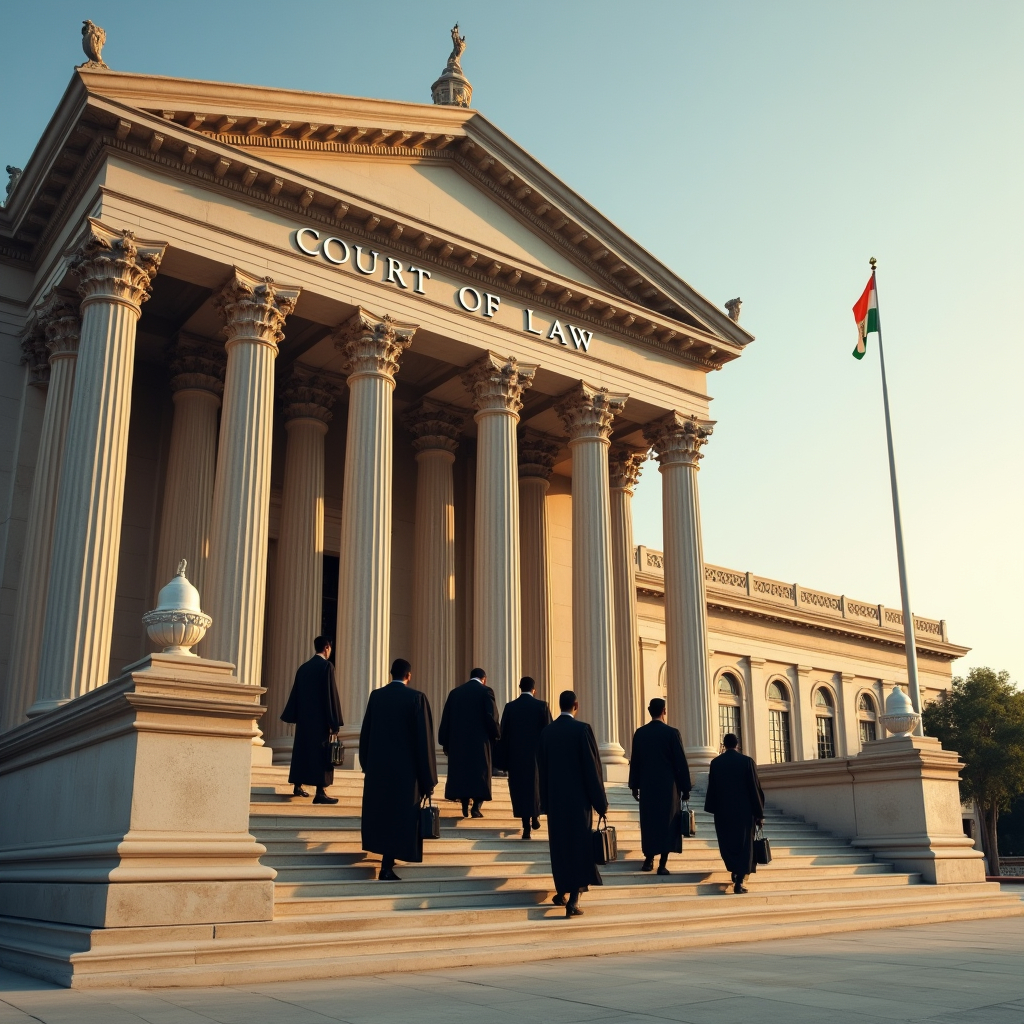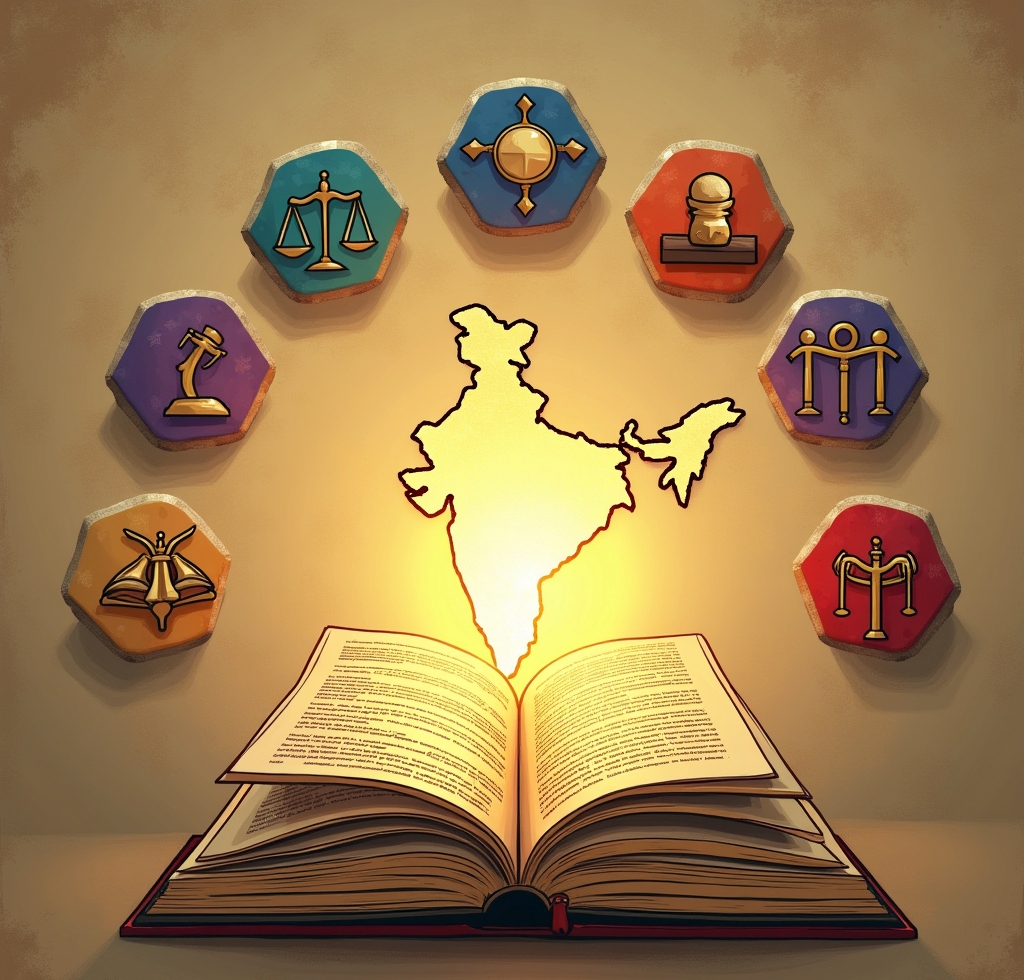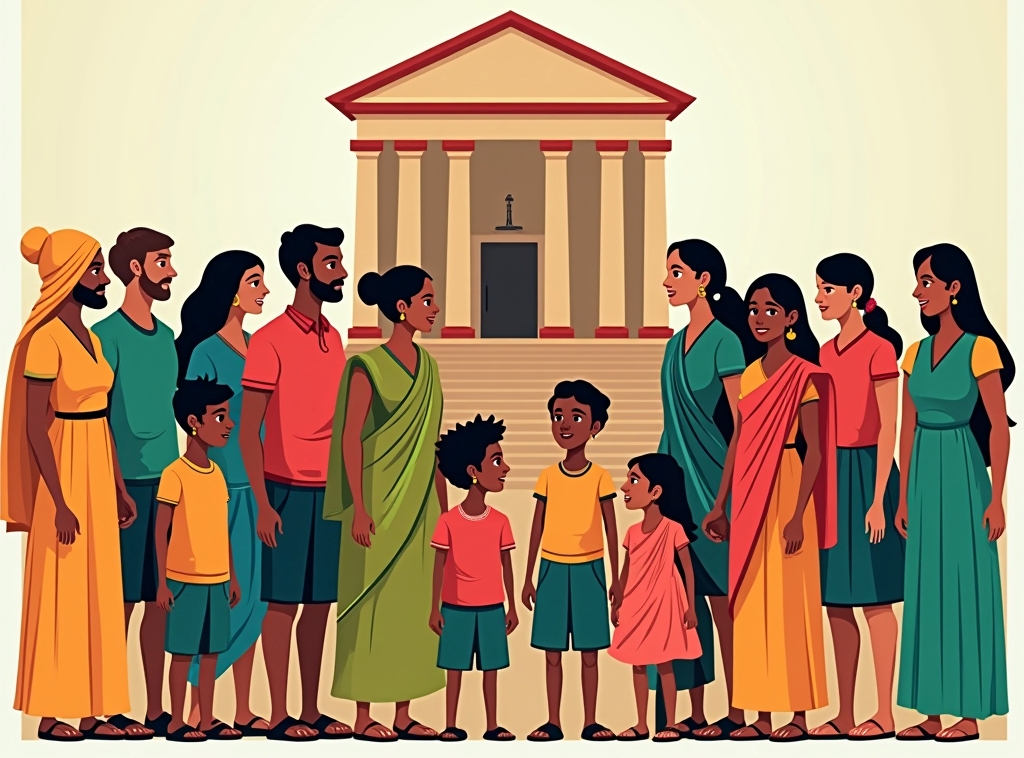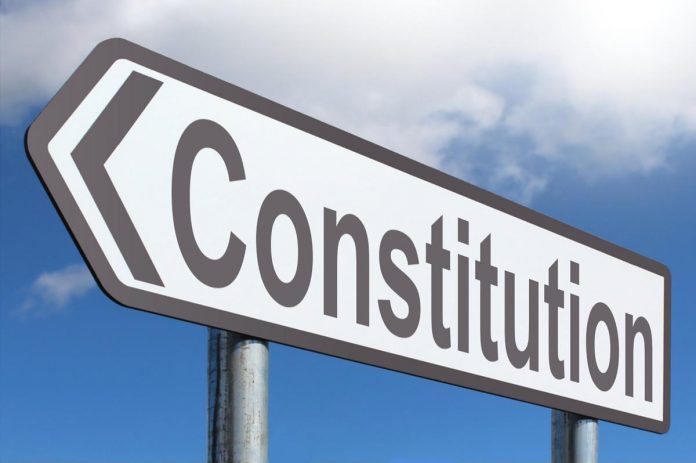This article has been written by Sneha Mahawar and further modified by Shubham Choube. This article discusses the concept of Article 226 at its length. It discusses the scope of Article 226 including all the writs and the relevant case laws. The article also involves a description of Article 227 and its difference with Article 226.
Table of Contents
Introduction
The judiciary is instrumental in the functioning of democracy in India as it protects the citizens from the abuse of power by the government and ensures the safety of the Indian Constitution. Consequently, the Constitution of India provides for a strong, autonomous, and centralised system of judiciary.
Articles 32 and Article 226 make the Supreme Court and the High Courts empowered to file a suit against any governmental body should the rights and freedoms of any citizen be infringed. Under Article 226 of the Indian Constitution, the High Court has the jurisdiction to make orders and grants of writs to any person or authority. First of all, the party who is seeking the writ or the order has to establish that he has a right that is being infringed unlawful. In a case where the cause of action is partly within its jurisdiction, the High Court has powers to issue writs and directives to any Government, authority or person even though the Government, authority or person is not within the jurisdiction of the High Court.
As a general rule, the High Court does not invoke its power under Article 226 when the matter is essentially a question of fact. Likewise, where the petitioner has an alternate remedy, the Courts will not entertain the Article 226 petitions. Besides, if there is an undue delay in reaching the court, then the court may decline to grant relief under this article.
Article 226 of the Indian Constitution
Enshrined under Part V of the Constitution of India, Article 226 of the Constitution of India in relation to the High Courts empower them to issue writs where the writs are in the form of habeas corpus, mandamus, prohibition, quo warranto, certiorari, or any of them to any person or authority including the Government. According to Article 226 of the Constitution of India, High Courts possess the power and the capacity to implement any of the fundamental rights under Part III of the Constitution of India, 1949 or for any other cause.
As stated in Article 226(1), every High Court has the capacity and authority to make orders, directions or writs commanding or restraining in any part of India on the ground of the violation of any of the provisions of Part III of the Constitution or any legal rights within their territory.
Article 226(2) enables the High Courts to pass appropriate order, direction or writ to any government authority or any person beyond its territorial limit if the cause of action partly or wholly lies within its territorial jurisdiction even though the seat or abode of such government or authority or the person concerned is outside the territory.
According to Article 226(3), when an interim order is issued against the respondent under Article 226 in the form of an injunction or a stay without:
- providing the respondent with a copy of the petition and any relevant evidence; and,
- providing the respondent with an opportunity to be heard.
The High Court shall determine the application within two weeks from when the application was lodged or from the date on which the other party responded to the application, whichever is later. If the application is not so disposed of, the interim order shall be vacated on the expiry of that period, or, if the High Court is closed on the last day of that period, before the expiry of the next day on which the High Court is open, the interim order shall be vacated.
According to Article 226(4), the jurisdiction granted to the High Courts under Article 226 does not preclude the Supreme Court from using its powers under Article 32(2).
Historical background and origin of Article 226
Article 226 of the Indian Constitution through which High Courts can issue certain writs has a comprehensive history associated with the legal and pre-independent judicial system of India. It has its roots in British colonialism and is one of the most fundamental changes in the legal structure of India.
Colonial heritage and Indian High Courts Act, 1861
The origin of High Courts in India can be dated back to the Indian High Courts Act of 1861 passed by the British Parliament. This act established High Courts in Calcutta, Bombay, and Madras to replace the prior Supreme Court and Sadar Adalats in these presidencies. The High Courts had jurisdiction in civil and criminal cases and could issue writs. However, these powers were not as apparent or extensive as those assigned to the Indian Constitution at a later point in time.
The Government of India Act of 1935

The Government of India Act 1935 can be said to have introduced a measure of decentralisation of judicial power. It created the Federal Court of India which had limited original jurisdictions but rendered invaluable decisions on constitutional interpretation and controversies between the provinces and the centre. The High Courts persisted to operate under this act with increased authority and roles in proceedings. However, the power to grant the writs, which can be compared to the later Article 226, was not fully evolved yet.
Constituent assembly debates
The drafting of the Indian Constitution was surrounded with much controversy and discussion within the Constituent Assembly. Thus, the importance of such a mechanism to safeguard basic rights and involving judicial supervision can be noted. The Drafting Committee Chairman, Dr. B. R. Ambedkar also highlighted the significance of the judicial redress for the protection of liberty of person.
The Constituent Assembly deliberations were based on certain constitution making materials which included British legal system, constitution of USA and the Government of India Act, 1935. The power to issue writs was considered necessary for the enforcement of civil liberties and the preservation of individual rights. Therefore, Article 226 was included to establish the authority of High Courts to issue writs in order to enforce fundamental rights and for any other purpose which was intended to enhance the concept of judicial review.
Adoption and relevance to the Constitution of India
It became a part of the Constitution of India after the commencement of the Constitution on January 26, 1950. It empowered the High Courts to make writs, orders or directions to any person or authority within the territorial jurisdiction of such High Court. This provision was broader than Article 32 of the Constitution of India which provides power to the Supreme Court to issue writs for enforcement of fundamental rights. Article 226 extends this right to the enforcement of both constitutional and other rights of the individual.
Evolution and judicial interpretation
Over the years, the role, extent, and use of Article 226 have been defined through several important cases. Thus the judiciary has given a liberal interpretation to article 226 suggesting justice and protection of the rights of individuals. The power to issue writs under Article 226 has been used to deal with issues of unlawful detention, abuse of power by government officials and organs, violation of constitutional and other legal rights.
Scope of Article 226 of the Indian Constitution
In Bandhua Mukti Morcha vs. the Union of India (1984), it was held that Article 226 has a much broader scope than Article 32, as it gives the High Courts the power to issue orders, directions, and writs not only for the enforcement of fundamental rights but also for the enforcement of legal rights that are granted to the disadvantaged by statute and are just as important as the fundamental rights.
In Veerappa Pillai vs. Raman and Raman Limited (1952), it was held that the scope of the writs referred to in Article 226 it was held that the purpose of such writs was intended to empower the High Court to issue the same where subordinate bodies or officers act without jurisdiction or in excess thereof or in violation of the principles of natural justice or where they refuse to exercise a jurisdiction vested in them or where there is obvious error apparent on the record and the said act or omission or error or excess has caused an injustice However wide the jurisdiction is applied, it cannot seem to be wide or large enough for the High Court to transform it into a Court of Appeal and assess for itself the correctness of the challenged decisions and decide on what the correct position to be taken or order to be made.
In Chandigarh Administration vs. Manpreet Singh (1991), it was observed that the High Court does not sit and/or function as an appellate authority over the orders/actions of the subordinate authorities while exercising powers under Article 226. Its authority is just supervisory in nature meaning that it does not have executive powers. It includes the goal to maintain the government and several other agencies and courts within their respective jurisdictions. However, while performing this duty the High Court should not overstep the sound and set legal jurisdictions of the High Court.

In Burmah Construction Co. vs. the State of Orissa (1961), It was held that the High Court under Article 226 of the Constitution has no jurisdiction to entertain a petition for enforcement of civil remedy for a tort or breach of a contract to pay an amount to the claimant and such matter should be pursued in a civil suit. But to perform a statutory obligation, a petition can be filed under Article 226 against the state or an officer of the state in which an order can be passed for payment of money.
In Jagdish Prasad Shastri vs. the State of Uttar Pradesh (1970), it was held that if a writ petition raises factual problems that the High Court considers should not be decided in a petition for a high prerogative writ, the High Court has the right to refuse to resolve such matters and relegate the party seeking redress to his usual litigation process. The High Court’s decision to dismiss the petition because there were disputed factual matters to be resolved is unquestionably unlawful.
In the case of State of Madras vs. Sundaram (1964), it was held that where it has been established that conclusions which have been impugned were not based on any evidence at all, a High Court cannot, in exercise of its jurisdiction under Article 226 of the Constitution, entertaining appeal against findings of fact arrived at by a competent Tribunal in a properly conducted departmental inquiry. While the High Court uses its discretion to exercise the power under Article 226 of the Constitution, the adequacy of that evidence to substantiate the allegation is of no concern.
In Common Cause vs. the Union of India (2018), the Hon’ble Supreme Court said that the High Court has been empowered and can issue necessary writs in the nature of mandamus, certiorari, prohibition, quo warranto and habeas corpus under article 226 of the constitution for the protection of fundamental rights or otherwise. Consequently, the High Court can grant relief for enforcement not only of fundamental rights but also of any other reason which might mean enforcement of public responsibilities by public authorities.
Writs under Article 226 of the Indian Constitution
A writ is a written order issued by a court instructing someone to do or refrain from doing something. It possesses authority and the ability to compel compliance. We all have various rights, such as the right to life, the right to education, the right to dignity, and so on, but these rights can only be used if they are safeguarded. Our Constitution primarily mentions the protection of our fundamental rights in four articles:
- Article 13 of the Constitution of India discusses judicial review;
- Article 359 of the Constitution of India states that fundamental rights cannot be curtailed at any time except in the situation of emergency;
- Article 32 of the Constitution of India mentions the protection of our fundamental rights by the Supreme Court;
- Article 226 of the Constitution of India mentions the protection of our fundamental rights by the High Courts.
Part III of the Indian Constitution deals with fundamental rights, it runs from Article 12 through Article 35. This essentially indicates that Article 32 of India’s Constitution, which stipulates the preservation of fundamental rights, is a fundamental right in and of itself.
Types of writs available under Article 226
Habeas Corpus
It is a Latin word, which translates to “to have a body or to produce a body. ” This is the strongest of all the writs, and it is used most frequently. For instance, if a person is detained unlawfully by the government, that person, or his/her relatives or friends can approach the courts through a Writ of Habeas Corpus to seek the release of the detained person. When this writ is exercised, the Supreme Court or the High Court asks the State to explain why the particular person has been detained. If the ground is considered as irrational then the person is immediately released from police custody. This is the order of the court to produce the detainee before that particular court to make a determination as to the validity of the arrest. The main purpose of this type of writ is to secure the release of a person who has been deprived of his liberty unlawfully or is imprisoned unlawfully. This writ is important because it defines whether a person has a right to liberty and freedom in the society.
Grounds for Issuance:
- Unlawful Detention: It is often used when a person is held in custody without any legal justification or against the provisions of the law. The detaining authority is required to present the detainee before the court to explain why the detention was legal.
- Violation of Fundamental Rights: Whether the said detention denies a detainee his/her fundamental right to personal liberty under Article 21 of the Constitution.
- Absence of Legal Justification: When there is no legal justification or proper warrant for holding a suspect.

This writ cannot be used in the following four situations:
- Detention is legal;
- Disobedience to the Court;
- The Court has no jurisdiction over detention;
- A Competent Court is in charge of detention.
Who may apply for the writ:
- The individual who has been illegally imprisoned or incarcerated;
- The individual who is aware of the advantage related to the case;
- The individual who has knowledge about the facts and circumstances of the case willingly files a writ of habeas corpus under Articles 32 and 226.
Rudul Sah vs. State of Bihar (1983)
In this case, a person who had already served his sentence was wrongfully held in prison for an additional fourteen years. The person was promptly freed from jail and was given exemplary damages after using the writ of Habeas Corpus.
Sunil Batra vs. Delhi Administration (1980)
In this case, it was said that a writ petition for habeas corpus may be filed not only for the purpose of seeking the prisoner’s release on the ground that he was detained improperly or illegally but also for the purpose of protecting him against any sort of ill-treatment or discrimination by the authority under which he is detained. Therefore, herefore, there is the possibility to file a petition for wrongful detention, and the nature of the detention can also be looked into.
Nilabati Behra vs. the State of Orissa (1993)
In this case the petitioner’s son was kidnapped and taken by the Orissa police for questioning. This time all efforts made to know his whereabouts were in vain. Consequently, a habeas corpus writ petition was preferred before the court. While the petition was still pending, the petitioner lost his son who was found dead on a railway track. The petitioner was compensated with Rs. 1,50,000.
Mandamus
It is a Latin phrase which when translated to English means ‘we command’. It is a type of command which can be used to discharge public functions by any constitutional or statutory or non-statutory, universities or courts or body. This writ is employed to make sure that a public officer performs the tasks assigned to him or her. The precondition of this writ is that there must be a public duty. The Writ of Mandamus is issued to compel any authority to perform their public duties assigned to them. It is an order or command given to someone, a company, a lower court, or the government to perform what they are legally required to do. Any person aggrieved by a breach or abuse of a public duty and who has the legal power and authority to compel performance of this duty can apply for a writ of Mandamus in the High Court or the Supreme Court.
Grounds for Issuance:
- Failure to Perform a Duty: This writ is used when a public authority or an official has not done what was expected of him or her under the law.
- Legal Obligation: It has to be the legal duty, prescribed either in statutes or case laws, which the authority is under the obligation to discharge.
- No Discretion: Mandamus can not be ordered where the duty is discretionary or where the authority has the choice whether to discharge the duty or not.
This writ cannot be used in the following three situations:
- When a private body is entrusted with a public obligation;
- When the duty is discretionary;
- When the duty is based on a contract.
Gujarat State Financial Corporation vs Lotus Hotels (1983)
In this case, the Gujarat State Financial Corporation entered into an arrangement with Lotus Hotels, stating that the funds would be released so that the building work could proceed. They did not, however, release the monies subsequently. As a result, Lotus Hotels filed an appeal with the Gujarat High Court, which issued a writ of mandamus ordering Gujarat State Financial Corporation to perform its public duty as promised.
Hemendra Nath Pathak v. Gauhati University (2008)
In this case, the petitioner sought a writ of mandamus against the institution where he studied because the university failed him despite the fact that he received the requisite passing grades under the university’s statutory standards. The university was ordered to declare him pass according to university norms, and a writ of mandamus was issued.
Sharif Ahmad vs. HTA., Meerut (1977)
In this case, the respondent failed to follow the tribunal’s instructions, and the petitioner went to the supreme court to have the tribunal’s orders enforced. The Supreme Court issued a Mandamus, requiring the respondent to obey the tribunal’s directives.
SP Gupta vs. Union of India (1981)

In this case, the court concluded that the president of India cannot be served with a writ directing him to determine the number of High Court judges and fill vacancies. The courts cannot issue writs of Mandamus against individuals such as the president and governors. Also known as the Judges’ Transfer Case, this PIL played a crucial role in ensuring judicial independence and transparency in judicial appointments. The case emphasised the importance of a free and impartial judiciary in upholding the rule of law and constitutional governance.
Certiorari
It is a Latin phrase which translates to ‘to be certified. ’ With this writ, the Supreme Court and the High Court can compel any other subordinate court to produce records for scrutiny. These reviews are for the purpose of ascertaining whether the decisions made by the lower court are legal or not. Their decisions may be unlawful where such decisions are made beyond jurisdiction, without jurisdiction, in unconstitutional jurisdiction, or in breach of the principles of natural justice. If their decisions are found to be unconstitutional, or illegal then those judgments will be quashed.
Grounds for Issuance:
- Exceeding Jurisdiction: There should be a court, tribunal, or an official with the legal power to decide the issue and the responsibility to act judicially; When that lower court or tribunal exceeds its powers or assumes jurisdiction it does not have.
- Violation of Natural Justice: If the lower court or tribunal behaves in a way that is contrary to natural justice and in violation of the principles of natural justice, including a failure to offer a fair hearing.
- Error of Law: In situations where there is an arguable legal defect that has occurred in the lower court or tribunal proceedings.
A.K. Kraipak vs. Union of India (1970)
In this case, the writ of certiorari was issued to the lower courts and their judgments delivered were quashed. The cases which were reviewed were termed illegal and were held as quashed and invalid for future purposes.
Collector of Customs vs. A.H.A. Rahiman (1956)
In this case, the customs collector issued a seizure order without any prior warning or investigation. The Madras High Court ruled that the collector’s order was made without hearing or understanding all of the facts of the case and that this was contrary to the principles of natural justice. As a result, the Madras High Court issued a writ of certiorari to quash the collector’s order.
Syed Yakoob vs. Radhakrishnan (1964)
In this case, the Court held that a writ of certiorari can fix an error of law that is obvious on the face of the record, but not an error of fact, no matter how bad it appears to be.
A. Ranga Reddy vs. General Manager Co-op. Electric Supply Society Ltd. (1977)
In this case, the Court found that no writ of certiorari could under any circumstances be made against a private body. This appellant, Co-operative Electricity Supply Society Limited, is a private body other than the public authority carrying out a public function; thus, the writ petition cannot be filed against such private society.
Prohibition
For all intents and purposes, the difference between a writ of prohibition and a writ of certiorari is marginal. The saying “an ounce of prevention is better than a cure” aptly captures the difference between the two writs. In this case, the word preventive is connected with prohibition which is defined as ‘to forbid’ whereas the word certiorari is associated with treatment or cure. If a judgement is given and it is incorrect, it is recalled and a Writ of certiorari is issued. Nevertheless, if the judgement is still to be published and to avoid the said mistake, a writ of prohibition is resorted to. This writ can only be used up to the point that the judgement has not been delivered. A writ of prohibition is sought to restrain a lower court/ tribunal from assuming jurisdiction or exceeding the scope of its authority, or affording natural justice to the parties. This writ suspends the normal procedures in the lower court and brings them to a halt. As a general rule, where these grounds are applicable, a writ of prohibition may be granted on the same bases as a writ of certiorari except where there is a mistake or law apparent on the face of the record.

Grounds for issuance:
- Jurisdictional Error: The writ is used when any lower court or any tribunal has ventured into an area of jurisdiction it was not entitled to, or had gone beyond the limits of its mandate.
- Violation of Law: When there is a legal flaw in the decision-making process for instance, when there is an error in the law.
- Procedural Irregularity: This may be where the lower court or tribunal has not adhered to legal procedures or the principles of natural justice.
East India Company Commercial Ltd. vs. Collector of Customs (1962)
In this case, the Supreme Court clarified the concept of a writ of prohibition, stating that it is an order issued by a higher court ordering a lower/inferior court to halt proceedings on the grounds that the court either lacks jurisdiction or is exceeding its jurisdiction in determining the matter.
P.S. Subramaniam Chettiar vs. Joint Commercial Tax Officer (1966)
In this case, the court held that a writ of prohibition may only be issued if the petitioner can show that any government official owed him a duty that was under his authority but was not carried out.
Brij Khandelwal vs. the Union of India (1975)
In this case, the Delhi High Court refused to pass an order restraining the Central Government from entering into a boundary dispute agreement with Sri Lanka. The basis for this ruling was the proposition that prohibition does not preclude the government from fulfilling executive duties, and that prohibition is aimed at reigning in quasi-judicial as opposed to executive powers.
However, with the emergence of the idea of natural justice and the setting up of the idea of fairness even during administrative work, this stance is not sustainable any more and the rigidity of prohibition also has been done away with also. If any of the grounds on which the writ of mandamus is sought is made out, the writ can now be issued to anybody irrespective of the nature of the function performed. Today Prohibition is viewed as an extensive measure concerning judicial oversight of quasi-judicial and administrative decisions that interfere with rights.
Quo Warranto
It is a Latin term, which literally translates to ‘by what authority.’ The Courts may issue this writ to seek information from any public official as to the authority on which that official has assumed that certain public office. In this case, if it is found that the public office was unlawfully obtained, the public official has to relinquish the job. Unlike the other five writs, this one may be issued by any person.
Conditions to be satisfied for issuing the writ of quo warranto:
- The office must be open to the public, and it must be established by statute or by the constitution;
- The office must be a substantive one.
- In appointing such a person to such a position, there must have been a violation of the constitution or legislation, or statutory instrument.
- Unlawful Claim: This writ is issued when a person is exercising a public office unlawfully or without lawful basis, to statutory or constitutional measures.
- Legal Authority: The petitioner has to be able to prove that the person occupies the office unlawfully, and that there is a legal remedy for a challenge to the appointment.
Jamalpur Arya Samaj vs. Dr. D Ram & Ors. (1954)
In this case, a quo warranto writ was brought against the working committee of a private entity, the Bihar Raj Arya Samaj Pratinidhi Sabha. The petition was refused by the court. The Patna High Court ruled that a writ of quo warranto may only be issued against someone who is unjustly holding a public office. In the event of a private office, it is not applicable.
In G. Venkateswara Rao vs. Government of Andhra Pradesh (1966)
In this case, the court held that a private individual may make an application for a writ of quo warranto. The individual filing the writ does not have to be directly impacted or engaged in the issue.
Puranlal vs. P.C.Ghosh (1970)
In this case, the court held that a person’s election to or appointment to a particular post is insufficient for the issuance of quo warranto unless that person accepts the position.
Difference between Mandamus and Prohibition

- The writ of mandamus is Issued against judicial, quasi-judicial, and administrative authority. Whereas, the writ of prohibition is Issued against judicial and quasi-judicial authority.
- The writ of mandamus is an order to a lower court to do something. Whereas, writ of prohibition is an order to a lower court to not do something.
- The writ of mandamus directs activity. Whereas, writ of prohibition directs inactivity.
- The writ of mandamus directs the performance of public duties. Whereas, writ of prohibition prohibits continuance in excess of their jurisdiction.
Difference between Certiorari and Prohibition
- The writ of prohibition is issued to stop a decision or administrative action in the process from moving further, whereas the writ of certiorari is used to quash a judgement that has already been made.
- When a subordinate court takes up hearing a subject over which it has no jurisdiction, the person being sued can file a writ of prohibition with the supreme court, and an order will be issued prohibiting the inferior court from continuing the case. When a subordinate court hears a cause or matter and makes a judgement on a case over which it has no jurisdiction, the aggrieved party must file a writ of certiorari with the Supreme Court, which will issue an order quashing the inferior court’s decision.
- A writ of prohibition is issued prior to the conclusion of the proceedings. Writ of certiorari is issued after a subordinate court or Tribunal, or any other entity exercising judicial or quasi-judicial responsibilities, makes a judgement that is outside of its authority.
- A writ of prohibition is intended to prevent rather than heal. Whereas, writ of certiorari is used to quash a decision made by a lower court.
- Only judicial or quasi-judicial organisations are subject to a writ of prohibition. Writs of certiorari, on the other hand, are issued against a public authority acting only in an executive or administrative capacity, as well as legislative bodies, as well as judicial and quasi-judicial organisations.
Article 226 : challenges and contemporary significance
Delays and Backlogs in the Judicial Process
Among the problems that are facing the judicial system of India particularly concerning Article 226 one of them is delay and case backlog. The High Courts that have powers to issue writs under Article 226 of the constitution face a large number of cases to handle. This congestion results in delayed trials which in turn delay the delivery of justice. These delays contradict the rationale of Article 226, which aims at offering an efficient legal redress for enforcement of rights. Creditors whose rights have been violated and require an interim order, like in cases of unlawful imprisonment or detention have to wade through the legal processes. The backlog has been attributed to several factors such as lack of adequate judicial personnel, lack of infrastructure and delays in procedures. Solving these problems needs extensive judicial reforms that include increasing the number of judges, improving the court facilities, and simplifying the processes to overcome the cases as quickly as possible.
Accessibility for Marginalised Communities
While Article 226 grants a wide range of powers to public authorities to help the needy to access justice in India, the process still remains cumbersome for the needy particularly the marginalised communities. Lack of socio-economic access, legal consciousness, and physical accessibility limit these groups of people to fully utilise the judicial remedies available under Article 226. High Courts in most cases are located in urban centres and are not reached by individuals from the rural and isolated areas. Furthermore, legal expenses involved in litigation, including attorney’s fees as well as other incidental expenses, present another challenge. Such parties, such as the economically subdued, women, and minorities, cannot afford to seek legal redress. To fill this gap there is need to improve on legal aid, legal awareness and accessibility to courts inclusive of mobile courts and e-courts. Enhancing the frameworks for underrepresented groups will help guarantee that the provisions of Article 226 are accessible and useful to all.
Complexity of Modern Legal Issues
Contemporary legal environment is complex and raises difficulties in relation to implementation of Article 226. Owing to advancement in technology, globalisation, and the ever changing socio-economic factors, legal matters are complex. The High Courts are now called upon to deal with issues that are complex such as cyber law, intellectual property rights, environmental laws, and complicated financial instruments, among others. Such problems require specialised knowledge and experience, and this could exert pressure on the conventional judiciary systems. However, the future direction of Article 226 requires an expansion of its interpretative domain to meet new legal needs without distorting the delicate balance between judicial activism and judicial self-restraint. To overcome this challenge, it is important to ensure that there is constant training of the judges through developing understanding of new areas of law. Furthermore, applying new technologies in the judicial system, for example, AI and legal data analysis, can help to handle large and intricate cases effectively. Only through adjusting to the new legal conditions, the judiciary can guarantee that Article 226 will remain an effective corrective legal power in the modern world.
High Courts and their function in relation to Article 226 of the Indian Constitution
Jurisdiction

The Supreme Court judgement in Benedict Denis Kinny vs. Tulip Brian Miranda(2020) underlines the sweeping ambit and the special status of High Court in exercising its powers under Article 226 of Constitution of India. This decision reaffirms that despite the consideration of other statutory remedies, they do not in any manner curtail the High Courts jurisdiction in the issuing of writs for the protection of legal and constitutional rights. High Courts are therefore able to guarantee that constitutional provisions are complied with and that authorities behave legally regardless of another statute. This case is a landmark in the protection of the right of appeal to the supreme court and ensuring the dominance of constitutional remedies in the legal framework of India.
Question of fact in writ jurisdiction
In the given case concerning the writ jurisdiction under Article 226 of the Indian Constitution, the primary duty of the High Court is to protect individuals against unlawful actions and decisions of public authorities and to make sure that they are fair and legal. Since under article 226 of the constitution High Courts have the power to issue writs for enforcement of fundamental rights and other legal rights, it becomes important to examine how the Court deals with questions of fact within this territory.
The primary purpose of writ jurisdiction is not to decide factual controversies but to deal with legal questions raised concerning the action taken by a public authority. The High Court jurisdiction is to determine the validity of administrative decisions, their conformity with legislation, rules, and regulations and natural justice principles. In this context, the High Court does not usually delve into further fact investigation or reconsideration of the case merits. Rather, it matters that the decision-making was lawful and that the authority was acting within its jurisdiction.
Thus, the review under Article 226 cannot be said to be an appellate review in any sense of the term. Whereas first instance courts consider or analyse facts and the whole of the legal process, the writ jurisdiction of the High Courts addresses issues of law and the legal propriety of a decision or an action. This distinction implies that High Courts are not generally expected to review the probable veracity of the evidence adduced at first instance. Instead, they determine whether the actions of administrators were legal and whether the procedure was proper and equitable.
However, the High Court can only address questions of actual fact to a certain extent due to the following factors. For instance, the Court does not typically require close examination of factual issues that could take time to review evidence. The emphasis remains on whether there is a jurisdictional error, an abuse of power, or a denial of procedural fairness. This limitation is premised on the fact that the writ jurisdiction is not intended to be a substitute for normal appellate process or to act as a fact-finding commission.
High Courts as the Protector of Fundamental Rights
According to Article 226 of the Constitution of India, High Courts have the significant responsibility of protecting the fundamental rights. According to this provision, the High Courts have the jurisdiction to issue writs, orders, and directions to any person or authority within the territories of India for the protection of the rights included in Part III of the Indian Constitution. As the protectors of these rights, High Courts have the prerogative to act at any time that there has been a violation or probable violation of the said rights by the state or any other person.
The High Courts writs include habeas corpus, mandamus, prohibition, quo warranto, and certiorari which are effective in the delivery of justice. For example, the writ of habeas corpus can be used to correct a violation of the constitution regarding unlawful imprisonment in order to protect an individual’s right to bodily liberty. Likewise, the writ of mandamus can enforce the right to equality and non-discrimination by ordering public authorities to discharge their statutory duties.
Judicial activism is another feature whereby High Courts actively involve themselves in the protection of fundamental rights. They occasionally assume original jurisdiction in respect of matters of public importance and fundamental rights, entailing that justice be done to everyone irrespective of their station in life. The High Courts have played a great role in the evolution and enforcement of the constitutional fundamental rights in India. For instance the recent judgement of the Delhi High Court in the Naz Foundation case struck down section 377 IPC which criminalised consensual sexual relation between two adults of the same sex thus protecting fundamental rights of equality and non discrimination.
Further, High Courts have the authority to revisit administrative decisions and legislation that may encroach on fundamental rights. In the course of exercising the writ jurisdiction, they ensure that executive actions and laws conform to the constitution hence upholding the constitutionality of the constitution.

In other words, High Courts play the roles of wide awake guardians, overseeing that the rights provided in the Constitution are not infringed. This is especially important under Article 226 to ensure that the checks and balances between and among the three branches of government and the judiciary, in particular, are preserved. In this way, High Courts maintain fairness and safeguard people’s constitutional rights against any unlawful conduct.
Expansion of Jurisdiction Beyond Fundamental Rights
Although Article 226 specialises in enforcement of fundamental rights it has application in any violation of legal rights by granting High Courts the power to do so. This wider jurisdiction enables High Courts to issue the writs for any other purpose as it gives a holistic approach in the area of judicial review and remedy of the public.
This expansive jurisdiction under Article 226 empowers the High Courts to step in where administrative decisions, statutory construction and operations of other public bodies are invoked. This makes sure that the actions of the executive and administrative bodies are legal, proportionate and non-discriminatory. High Courts can declare certain administrative orders ultra vires thereby preventing the abuse of power and upholding the rule of law.
Among the positive consequences of the broadened jurisdiction, special mention should be made of the consideration of public interest litigation (PIL). High Courts have entertained several PILs involving structural injustice affecting a sizable population of the society including problems of pollution, corruption and violation of human rights. They have thus served a very important purpose especially in areas of social and economic justice which the executive and legislative branches of government have left unattended.
For instance, while exercising the writ of mandamus it is possible to compel public authorities to perform their statutory duties. It has been useful in situations where government departments have neglected to launch welfare programmes, enforce regulation or provide services appropriately. For instance, the writ of certiorari enables High Courts to quash decisions that have been made by the lower courts and tribunals to uphold justice and correct the mistakes that have been made.
High Courts too have invoked their writ jurisdiction to give meaning and enforce statutory rights. For instance in labour rights and consumer rights cases and education policies, High Courts have given directions that statutory laws were to be complied with in the letter and spirit. This broad oversight is helpful in as far as it aids in sustaining the quality and efficiency of different legislative measures.
In addition the power to issue a writ for “any other purpose” has assisted High Courts to deal with new and complex legal matters. Faced with new technologies, the globalised world and shifting cultures, new types of legal issues have emerged that call for progressive and fresh approaches in courts. High Courts have also embraced these changes hence exercising broader jurisdiction in order to accord legal redress to modern day vices like data protection, cybercrime and corporate fraud among others.
Alternate remedy
It is a principle of judicial review that the fact that an alternative remedy is available does not preclude the exercise of writ jurisdiction under Article 226 of the Constitution of India. This principle explains why High Courts participate in reviewing administrative actions and decisions for compliance with the rule of law and non-interference with fundamental or legal rights, even where other legal redress is available.
The High Court is vested with authority to issue writs under Article 226 for enforcement of various fundamental rights and other legal rights. This provision still captures the specific nature of the remedy awarded under writ petitions, which deals with concerns that fall under public law and administrative activities. Thus, it is clear that the scope of writ jurisdiction does not solely depend on the presence or absence of adequate remedies. Instead, it concerns itself with whether the actions under consideration are legal or constitutional.

Thus, even where there is an available remedy of appeal, this cannot prevent High Courts from entertaining a writ petition as it is an element that High Courts may consider when exercising their discretion. Despite the availability of ancillary relief, the High Court retains the discretion to determine whether relief under Article 226 should be granted or not. This discretion is exercised depending on certain factors which include the nature of the grievance, adequacy of the available legal redress, and likely bearing on public interest.
In practice, however, there are those exceptional cases in which the High Court may decline to exercise the writ jurisdiction even where an alternative remedy is available. For instance, where such an alternative remedy is efficacious, appropriate and affords a fair chance of relief, the High Court may decline intervention. However, this does not mean that writ jurisdiction will not lie down if an alternative remedy exists. It is, therefore, important to note that the decision to entertain or reject a writ petition is made with principles of justice and fairness in an attempt to uphold rights as enshrined in the Constitution.
Role of High Courts in Public Interest Litigation (PIL)
Locus standi under Article 226
Locus standi, or the right to bring an action or to be heard in a court, is a critical concept in the realm of legal jurisprudence. Under Article 226 of the Indian Constitution, which grants High Courts the power to issue writs, the principle of locus standi determines who is eligible to approach the court for the enforcement of fundamental rights or other legal rights.
PILs evolution and importance
PIL has brought about a sea change in the contemporary judicial scenario in India by enabling the common man to seek justice on issues of public importance. The idea of PIL was developed in the later part of seventies and early eighties as the Indian judiciary took the lead to fight social evils to protect the rights of the weaker sections of the society. Both Justice P. N. Bhagwati and Justice V. R. Krishna Iyer was instrumental in establishing this concept under which another person or a group could petition on behalf of a person who could not do so due to socio-economic factors.
The importance of PILs can be understood in the sense that it facilitates the provision of justice to all. It should be noted that in contrast to conventional litigation that addresses individual disputes between individuals and companies, PILs address significant problems affecting large groups of people. They have provided the courts with opportunities to respond to the systematic problems including environmentalism, human rights abuse, and other vices like corruption and lack of accountability among officials. PILs have broadened the range of possibilities for judicial involvement, and help the judiciary to become the defenders of the public interests and harbingers of social change.
PILs have revolutionised social justice and the reform process in India. Through dealing with concerns that are universal to the disadvantaged and the voiceless in the society, PILs have served a very vital role in the pursuit of equality, justice and human dignity. They have played a crucial role in policy and legislative reforms both at national and international levels.
Another area that has been most affected by PILs is the environment. The judiciary following various PILs has compelled the government to take adequate actions to control pollution, conserve forests and wildlife. Some of the improvement orders included the shifting of dangerous factories and the regulation of car exhaust emissions in Delhi which were as a result of the M. C. Mehta vs Union of India (1986) case.
Judicial review
The power of judicial review is an integral feature of the legal system of India that grants the judiciary the authority to scrutinise the activities of the executive and legislative arm of the government. This makes certain that laws and actions do not offend the constitution and the rights of individuals. Article 226 of the Constitution of India provides High Courts with power to issue certain writs for the enforcement of the fundamental rights or any other legal rights which helps High Courts in maintaining the rule of law.
Article 226 empowers the High Court to pass appropriate directions, orders or writs, including writs of habeas corpus, mandamus, prohibition, quo warranto and certiorari. These writs are important in affording remedies to individuals in as much as the state or its agencies have acted unlawfully and violated their legal and constitutional rights.

Article 226 entails broader review powers by the superior courts than under Article 32 under which the Supreme Court alone can protect essential rights under the Indian constitution. Article 226 entitles High Courts to deal not only with cases involving infringement of fundamental rights but also any other rights of the legal system. This makes the High Courts a crucial place where people seek justice for violation of their rights by the administration.
Difference between Article 32 and Article 226
Article 32, being a part of the Right to Constitutional remedies, forms the bedrock of the constitutional concept of protection of individual rights and freedoms. Its inclusion under Article 21 as a fundamental right also gives it added importance, offering a direct access to the Supreme Court for the protection of such rights. However, Article 226 though remains of paramount significance is a constitutional right. This classification implies that although it is crucial for the judiciary, it is not as automatically and intrinsically subjective as fundamental rights will be under the Constitution.
Suspension
The aspect of suspending Article 32 during an emergency shows the discretionary powers that are accorded to the government during special circumstances. However, this suspension can also be viewed as a threat to individual liberties during emergency situations. In contrast, there is no suspension of Article 226, which means that High Courts exist as a constant legal remedy, especially for legal and constitutional rights, in case of national calamities.
Scope
The restricted application of Article 32 to fundamental rights is in line with its purpose to primarily and directly safeguard these basic liberties. While Article 226 is far reaching, High Courts can intervene on many more aspects of legal problems than under Article 32, which makes it a more flexible instrument for seeking justice. This flexibility is particularly important in a complex legal environment where political and economic changes may necessitate judicial action in a wider range of areas than just the protection of basic rights.
Jurisdiction
The Supreme Court under Article 32 has original jurisdiction making it possible to apply and uphold the provisions on fundamental rights equally across the country. This is because it centralises the meaning and application of fundamental rights, thus ensuring that the understanding is consistent. However, the scope of High Courts under Article 226 is confined to the territorial jurisdiction and therefore is a more flexible one as it takes into consideration regional variations. However, it can also cause the variation in the application of legal principles in different states.
Discretion
The obligatory character of Article 32 stresses the non-derogable right of individuals to turn to the highest court for protection of fundamental rights. This ensures that there is a clear and unqualified access to justice for infringement on these rights. On the other hand, the discretionary powers granted to the High Courts under Article 226 enable them to screen out meritless or unsustainable causes of action, thereby making optimal use of judicial time and manpower. This discretion, however, brings subjectivity in the decision making process, thereby creating the option of inconsistency in the judicial system.
Article 227 of the Indian Constitution
Article 227 of the Constitution of India deals with the power of the High court to control and supervise the subordinate courts and tribunal. Its principal function is to oversee that lower courts and other administrative tribunals within their jurisdictions work efficiently and fairly, and in compliance with the doctrines of legality. This enables the High Courts to exercise supervision to ensure that there is proper administration of justice within the judicial system and adherence to the Rule of Law.
As for the general meaning of Article 227, it necessarily concerns the High Court’s power of control over the working of subordinate civil, criminal, and revenue courts, as well as other quasi-judicial authorities and tribunals. While the writ jurisdiction under Article 226 aims at protection of the fundamental rights and other legal rights, the Article 227 aims at seeing that the lower courts and tribunals do not assume jurisdictions which they have not been lawfully entitled to and that they followed legal procedures in the exercise of their jurisdictions. This supervisory role does not conceive an appellate function but a more general one in order to correct jurisdictional mistakes, process violations or non compliance with the law.
High Courts can employ this supervisory power in several ways such as giving directions or rectifying mistakes in the lower courts’ processes. This can include ordering a subordinate court to continue with a case in a lawful manner or eradicating any legal errors. However, it must be emphasised that pursuant to Article 227, the High Court cannot interfere with the merits of the decisions of lower courts unless there is a showing of jurisdictional error or procedural impropriety.

Hence, the supervisory jurisdiction under Article 227 is necessary to ensure unity and stability of the legal system. It assists in ascertaining that all judicial and quasi-judicial organs operate within their constitutional jurisdictions and offers a forum for redress of any perceived injustice on matters of procedure and jurisdiction. It then strengthens some of the checks and balances within the judicial system to ensure that the delivery of justice is more effective and fair.
In the case of Jacky v Tiny @ Antony & Ors.(2014), the Supreme Court of India, with the bench of Justice S. J. Mukhopadhaya and S. A. Bobde dealt with the scope of the writ jurisdiction under articles 226 and 227 of the Constitution of India. The Supreme Court noted that whereas Article 226 gives the High Court the direction to issue writs for the enforcement of legal and fundamental rights, Article 227 extends the supervisory jurisdiction. According to Article 227, the High Court has the power to oversee the jurisdictional activities of subordinate courts and tribunals that have gone beyond the scope of legal authority and legal principles.
The Court cited one of its previous judgments in the case of Shalini Shyam Shetty & Anr. v. Rajendra Shankar Patil (2010) wherein the Apex Court observed that the High Courts should decline to interfere in matters arising out of private law and where the respondent is a private party. The court opined that “An improper and a frequent exercise of this power would be counterproductive and will divest this extraordinary power of its strength and vitality.” The Court also pointed out that Article 227 of the Constitution enables High Courts to have corrective jurisdiction over the subordinate courts and tribunals, but it is not meant for a personal grievance between two parties.
The Supreme Court further observed that the writ petitions under Articles 226 and 227 cannot be entertained for settling intense personal disputes. To the contrary, Article 227 ought to be employed by High Courts to compel lower courts and tribunals to exercise their jurisdiction and respect the law especially where egregious mistakes or injustice has occurred.
Difference between Article 226 and Article 227 of the Indian Constitution
The Supreme Court of India relied on many previous constitutional judgments of the Hon’ble Apex Court in the case of Surya Devi Rai vs. Ram Chander Rai, one of which was Umaji Keshao Meshram and Ors. vs. Smt. Radhikabai and Anr which established the scope, power, and differences between Articles 226 and 227.
After reviewing its prior decisions in the matter of Surya Devi Rai vs. Ram Chander Rai (2003), the Supreme Court determined the following differences:
- Article 226 gives High Courts the ability to issue instructions, orders, and writs to any person or authority, including the government. Whereas, Article 227 gives High Courts the power of superintendence over all courts and tribunals in the territory over which they have jurisdiction.
- The most significant and distinguishing distinction between the two articles is that actions under Article 226 are in the exercise of the High Court’s original jurisdiction, whilst procedures under Article 227 are purely supervisory.
- The writ of certiorari is an exercise of the High Court’s original jurisdiction (Article 226); supervisory jurisdiction (Article 227) is not an original jurisdiction and is more analogous to appellate revision or corrective jurisdiction in this regard.
- The authority given by Article 226 of the Constitution can be exercised on a plea made by or on behalf of the party aggrieved, although the supervisory jurisdiction conferred by Article 227 can also be exercised suo moto.
Technological advancements and Article 226 of the Indian Constitution
Digitization of Court Processes
The concept of digitization of the proceedings of various courts can be considered as the new model in the reform process of the Indian judiciary in terms of improving productivity, accessibility and transparency. This transformation mirrors the increasing caseload backlog and the imperative to rationalise justice delivery. Digitization entails several elements such as; electronic filing of cases, case status and judgments through various devices, and digital case management systems.
The digitization is well known for minimising the time consumed in carrying out procedures. The use of paperless systems can enhance the efficiency of the handling and processing of cases by courts. This results in improved efficiency in the generation of summonses, notices, and other judicial processes, which in turn expedites the delivery of justice. Further, digitised records can be organised, accessed and also controlled with a lot of ease compared to physical records which may easily be damaged or lost.
Another important benefit is the improved availability of the services provided by the court. It also makes it easy for litigants, attorneys, and the public to follow case details and court hearings at their convenient time and place. It is most helpful for those who reside in rural or isolated areas since physically getting to the court structures may be very tasking for them. Also, digitization enhances accountability since users can easily access judicial data and scrutinise the performance of the judiciary.
The use of technology also improves the management of the courts in terms of organisation. The use of automated case management systems can assist with court date bookings, monitoring of cases, and court lists. Such systems can notify judges and other court personnel about the approaching deadlines and procedural obligations that require compliance, thus minimising the time-consuming clutter.
E-filing and virtual hearings

E-filing and virtual hearings are critical as they form the core of judicial digitalisation, which has made a profound shift in the dynamics of the legal profession and court proceedings in India. E-filing, also known as electronic filing, is a process by which lawyers and litigants can submit their legal documents and case files electronically and not physically. This not only helps in saving much time and less effort but also reduces the chances of mistakes and loss of papers.
Through the implementation of e-filing systems, the process of initiating or pursuing legal cases has been eased. Given the fact that e-filing enables the compiling of cases in a central storage and filing system, all the stakeholders are able to access documents and updates in real time. This contributes to the better organisation of the cases and less burden on the court personnel who do not need to sort and process the paper files.
Remote proceedings, which are held over portable communication applications or video conferencing, have become standard or commonplace, especially following the COVID 19 outbreak. These hearings allow the courts to conduct the proceedings virtually, thereby carrying out their functions even during physical limitations. Virtual hearings can be defined based on the following benefits: convenience, cost reduction, and improved accessibility. It means that the participants of the court sessions can be physically present at any location and avoid expenses on their travel and organisational problems connected with it.
Virtual hearings are also beneficial in that they help to include participants with mobility restrictions or those from remote regions. They make sure justice does not wait because of buildings and that matters that require urgent attention can be handled as such. In addition, virtual hearings increase the involvement of the public by giving them a better view of the proceedings that occur in the court.
However, the following are the challenges that are associated with the implementation of e-filing and virtual hearings. There are some important issues that need to be taken into consideration: the protection of digital information and its non-disclosure, the reliability of virtual proceedings and, finally, the problem of digital gap. The potential for such advancements to enhance the field is apparent; nevertheless, sustained work is required to strengthen the technological framework, train the legal workforce, and enforce secure and powerful cybersecurity measures.
AI and legal tech for case management
The application of Artificial Intelligence (AI) and legal technology in handling cases has transferred a new face to the judiciary in terms of function and decision making. Intelligent systems can parse large volumes of legal information, find connections, and offer recommendations that improve judicial performance and efficiency.
Another major use of AI in case management is in the area of predictive analysis. There are insights regarding various cases from which AI algorithms can deduce the possibilities of the case and help judges and lawyers. These predictive models are capable of evaluating the probability of the success of various legal arguments, recognizing possible threats and proposing the best course of action. This is not only helpful in the preparation of a case but also helps to standardise decisions made by Judges.
It can also reduce the amount of time spent on more mundane tasks such as document review, legal research and scheduling of cases. Technologies such as Natural Language Processing (NLP) can parse through legal documents, retrieve the information and even sort through case folders saving much time and effort as compared to manually handling documents. This enables legal professionals to prioritise higher value activities in terms of tasks.

Through the application of artificial intelligence, the legal chatbots and virtual assistants may offer instant support to those in court or lawyers. These tools may provide answers to simple legal questions, help complete the relevant paperwork, and inform the status of the case. In this way, instant support of AI-based solutions makes a positive impact on clients and helps to facilitate the access to legal assistance.
Also, AI can help improve the administration of justice by enabling intelligent case tracking and monitoring. These systems can provide reminders to judges and court personnel on some possible upcoming deadlines, procedural rules, and events in cases and prevent such omissions.
Although the implementation of AI and legal technology brings the benefits, it has ethical or pragmatic issues. The issues of calibration of the model, fairness of the AI algorithms, safeguarding of the data, and the problem with the bias in the automatic delivery of dispositions are the significant concerns. Thus, it is possible to state that constant monitoring, open and clear AI use, and compliance with ethical frameworks are critical to using AI in the judicial system for maximal effectiveness and minimal harm.
Court can not suggest policy under Article 226
According to Article 226 of the Indian Constitution the High Courts have the power to issue writs for the enforcement of fundamental and other rights. Nevertheless, this power is not to be confused with the function of making or proposing public policy. Under Article 226, the judiciary’s role is to check that the public authorities perform their functions within the legal and constitutional frameworks and that they do not act unreasonably or unlawfully. It is the constitutional role of the Court to consider the lawfulness of administrative actions and disputes arising due to violation of legal rights and/or abuse of power, which does not include making policy decisions.
The separation of powers principle presupposes that policymaking is the authority of the executive branch and the legislative branch. It is imperative for the reader to be reminded that courts cannot design or even suggest any policies since such roles are not within their purview of duty. However, the courts may be reviewing whether current policies and procedures are aligned with the law and the constitution. When a policy decision leads to a legal/constitutional violation, the Court can prescribe remedial measures or quash the action. But this does not mean the substitution of policies or construction of new policy paradigms.
By doing so, the judiciary ensures that it remains a neutral participant in the legal process and does not encroach on the policy-making arena that belongs to the legislators and executive branches. This way the judiciary does not overstep its bounds and only seeks to correct legal and constitutional injustices and imbalances thus maintaining the right proportion between judicial activism and policy making roles in governance.
Conclusion
Martin Luther King once said, “Injustice anywhere is a threat to justice everywhere”.
This means that any unfair behaviour or injustice that occurs in some part of the globe will become contagious and will not be tolerated anywhere. Therefore, all the justice that has been served will be tarnished and everyone else will be trying to find out how they can be subjected to the same injustice. In addition, it is essential that there are no discriminations against the people, and that there are no discriminations in the system. That is why, the notion of writ was incorporated into Common Law to maintain a check on the administrative procedures. Hence, the Indian Constitution empowers the people by the Articles 226 and 32 which execute the writs of people’s basic rights.
Frequently Asked Questions (FAQs)
What are the kinds of writs that can be awarded under Article 226?
The following common kinds of Writs can be issued by the High Courts under Article 226:
Habeas Corpus; Mandamus; Prohibition; Quo Warranto; and Certiorari.
Can Article 226 be used against private individuals?
In any case, Article 226 typically concerns matters of issuing writs against recalcitrant public entities. However, it is also available against other private individuals as long as they are exercising public work/office.
What are the implications of Article 226?
Article 226 is vital in the protection of citizens’ rights by affording them a direct and expeditious way to access the High Courts in the case of violations by public authorities.
Is there any period of limitation for filing a petition under Article 226?
The Constitution does not say anything about the time limit within which a petition should be filed under Article 226. However, the High Courts may decline to hear the particular petition if there is undue delay in the filing.
References
- https://blog.ipleaders.in/difference-article-32-article-226/
- https://blog.ipleaders.in/writ/#High_Court_Article_226
- https://www.youtube.com/watch?v=3cG-0QeRF3o&ab_channel=FinologyLegal
- https://www.mondaq.com/india/court-procedure/691090/articles-226-and-227-of-the-cconstitution-of-India-their-scope-powers-and-differences
- https://legaldesire.com/scope-of-article-226-of-constitution-of-india/
- https://www.lexology.com/library/detail.aspx?g=693d3c71-8ef0-4614-bb46-7701a2741901
- https://www.vskills.in/certification/blog/types-of-writs-in-indian-constitution/
- https://www.advocatekhoj.com/blogs/index.php?bid=7384dff0a8c57580980091140&bcmd=VIEW
- https://thefactfactor.com/facts/law/civil_law/administrative-law/the-writ-of-prohibition/14004/#:~:text=The%20writ%20of%20prohibition%20is%20available%20during%20the%20pendency%20of,issued%20forbidding%20the%20inferior%20court
Students of Lawsikho courses regularly produce writing assignments and work on practical exercises as a part of their coursework and develop themselves in real-life practical skills.
LawSikho has created a telegram group for exchanging legal knowledge, referrals, and various opportunities. You can click on this link and join:
Follow us on Instagram and subscribe to our YouTube channel for more amazing legal content.
 Serato DJ Crack 2025Serato DJ PRO Crack
Serato DJ Crack 2025Serato DJ PRO Crack










 Allow notifications
Allow notifications



